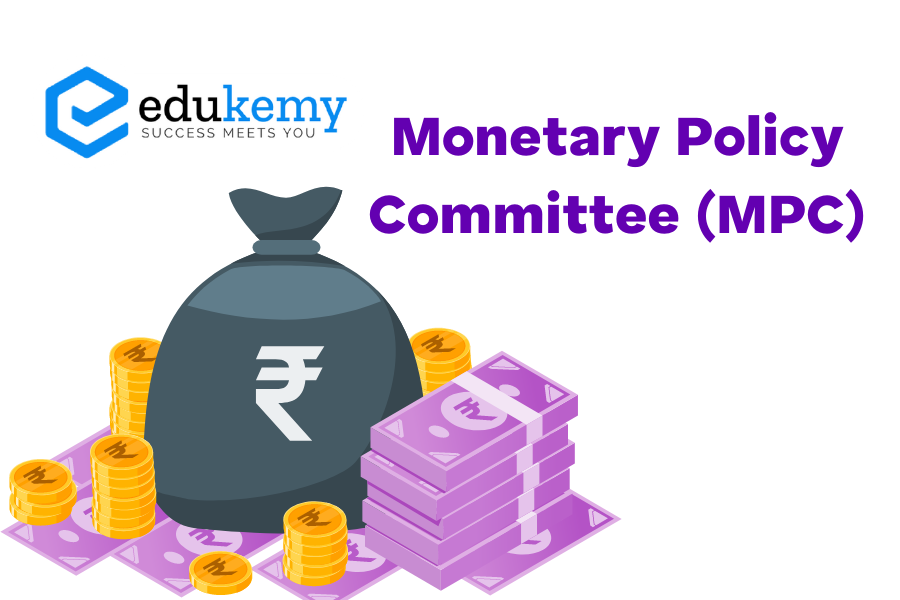
The Monetary Policy Committee (MPC) plays a critical role in shaping India’s monetary policy. Established in 2016 through an amendment to the Reserve Bank of India (RBI) Act, the MPC is tasked with making key decisions related to monetary policy.
Key Features of MPC:
- Formation and Composition:
- The MPC is a six-member body headed by the Governor of the RBI. Other members include the Deputy Governor in charge of monetary policy, one official nominated by the RBI Board, and three independent members appointed by the Government.
- The independent members are chosen by a search-cum-selection committee and serve a four-year term, with no eligibility for reappointment. Members of Parliament, Legislature, or public servants cannot be appointed to the MPC.
- Decision-Making Process:
- The MPC replaced the previous system where the RBI Governor, with the aid and advice of a technical advisory committee, had complete control over monetary policy decisions.
- All decisions are made through a majority vote, and in case of a tie, the RBI Governor has the casting vote.
- Objective and Responsibilities:
- The primary objective of the MPC, as stated in the amended RBI Act, is to maintain price stability while considering the objective of growth in the context of an increasingly complex economy.
- The MPC is responsible for deciding the policy rate, specifically the Repo rate, to contain inflation within the target level set by the Central Government.
- Transparency and Accountability:
- The MPC enhances transparency and accountability in the monetary policy formulation process. Minutes of the MPC meetings are published by the RBI after 14 days.
- The RBI also publishes a document explaining the steps it plans to take to implement the decisions of the MPC.
- Advantages of Committee-Based Formulation:
- Collective Wisdom: A committee can represent different viewpoints, and studies indicate that collective wisdom is often superior to individual decision-making.
- Reduced Pressure: Spreading responsibility across committee members can help reduce internal and external pressure on an individual.
- Continuity: A committee ensures continuity in monetary policy formulation, even with changes in individual members.
- Institutionalization: The committee-based approach institutionalizes the process of monetary policy formulation, aligning with the RBI’s clear inflation target mandated by statute.
The MPC has become a pivotal institution in shaping India’s monetary policy, contributing to a more structured, transparent, and accountable decision-making process.
FAQs
Q: What is the Monetary Policy Committee (MPC)?
A: The Monetary Policy Committee (MPC) is a committee formed by the central bank of a country, tasked with setting the monetary policy. It typically consists of central bank officials and external members appointed by the government. The MPC’s primary objective is to regulate the money supply and interest rates to achieve specific macroeconomic goals, such as price stability or economic growth.
Q: What are the key functions of the MPC?
- Setting interest rates: The MPC decides on the appropriate level of interest rates, such as the central bank’s benchmark rate, to achieve its monetary policy objectives.
- Formulating monetary policy: It assesses economic indicators and forecasts to determine the stance of monetary policy, including adjusting interest rates and implementing unconventional measures if necessary.
- Communication: The MPC communicates its decisions and rationale to the public to provide transparency and guidance to financial markets and businesses.
Q: How does the MPC make decisions?
A: The MPC typically meets at regular intervals, usually monthly or quarterly, to review economic conditions and decide on monetary policy actions. Members analyze economic data, such as inflation, GDP growth, employment figures, and exchange rates, to assess the current state of the economy and future outlook. Discussions among committee members lead to a consensus decision on whether to adjust interest rates or maintain the current policy stance.
Q: What factors influence MPC decisions?
A: MPC decisions are influenced by various factors, including:
- Inflation: The MPC aims to maintain price stability by keeping inflation within a target range set by the government.
- Economic growth: It considers the pace of economic activity, such as GDP growth and employment levels, to support sustainable growth.
- External factors: Global economic conditions, exchange rates, and geopolitical developments may also influence MPC decisions.
- Financial stability: The committee monitors financial markets and assesses risks to the stability of the financial system when making policy decisions.
Q: What are the implications of MPC decisions?
A: MPC decisions can have significant implications for the economy and financial markets. Changes in interest rates affect borrowing costs for businesses and consumers, influencing investment, consumption, and saving decisions. Moreover, MPC actions signal the central bank’s monetary policy stance, influencing market expectations and investor behavior. Therefore, understanding MPC decisions is crucial for businesses, investors, policymakers, and the general public to anticipate economic developments and adjust their strategies accordingly.
In case you still have your doubts, contact us on 9811333901.
For UPSC Prelims Resources, Click here
For Daily Updates and Study Material:
Join our Telegram Channel – Edukemy for IAS
- 1. Learn through Videos – here
- 2. Be Exam Ready by Practicing Daily MCQs – here
- 3. Daily Newsletter – Get all your Current Affairs Covered – here
- 4. Mains Answer Writing Practice – here

